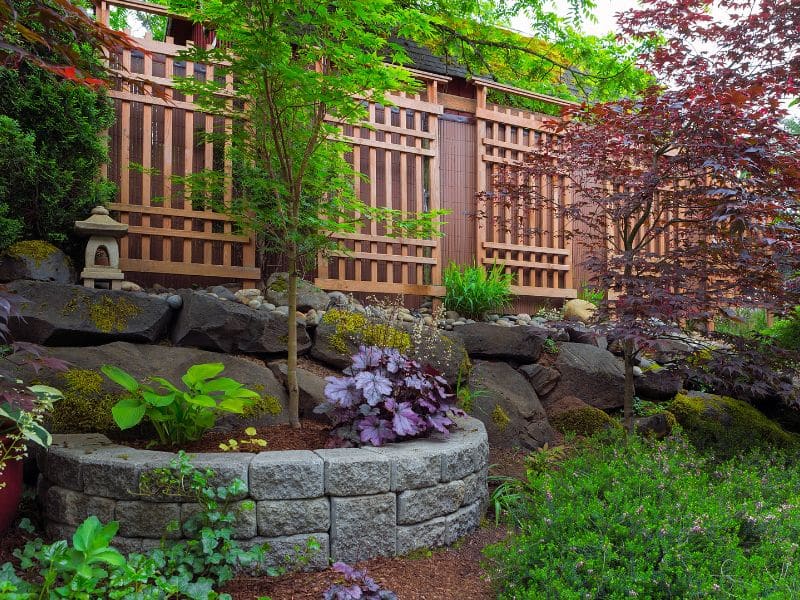Hardscaping and landscaping are two distinct components of outdoor design that work together to create beautiful, functional, and harmonious outdoor spaces. Understanding the differences between hardscaping and landscaping, as well as their respective benefits, is essential for creating a well-balanced and appealing outdoor environment.
Hardscaping
Definition: Hardscaping refers to the non-living, man-made elements in outdoor design. This includes materials like stone, concrete, wood, brick, and metal used to create structural and functional features in the landscape.
Examples of Hardscaping Elements
- Patios: These are flat, paved areas typically used for outdoor dining, seating, and entertainment.
- Walkways and Pathways: These provide functional routes through the landscape, connecting different areas of the outdoor space.
- Retaining Walls: These are structures used to retain soil and create level terraces on sloping landscapes.
- Driveways: Paved areas for vehicle access to the property.
- Decks: Elevated platforms made of wood or composite materials.
- Fences and Gates: These provide privacy, security, and boundaries.
- Fireplaces and Fire Pits: These create a focal point and provide warmth and ambiance.
- Water Features: Man-made elements like fountains, ponds, or waterfalls.
- Outdoor Kitchens: Equipped with grills, sinks, and prep areas for outdoor cooking.
- Pergolas and Gazebos: Structures that provide shade and define outdoor living spaces.
Benefits of Hardscaping
- Durability: Hardscape elements are typically long-lasting and require minimal maintenance.
- Functionality: They provide structure, organization, and usability to outdoor spaces.
- Aesthetics: Hardscaping adds visual interest, texture, and architectural appeal.
- Property Value: Well-designed hardscaping can increase the value of a property.
- Seasonal Use: Many hardscape features extend the usability of outdoor spaces into different seasons.
Landscaping
Definition: Landscaping encompasses the living, natural elements in outdoor design, such as plants, trees, shrubs, flowers, and grasses. It focuses on the soft, organic components of the outdoor environment.
Examples of Landscaping Elements
- Plant Beds: Areas where various plants are cultivated for aesthetic purposes.
- Lawn: Grassy areas for recreational activities and aesthetics.
- Trees: Large, woody plants that provide shade, structure, and habitat.
- Shrubs: Bushy plants that can serve as decorative borders or hedges.
- Flowers: Colorful, seasonal plants that add vibrancy and fragrance.
- Ground Cover: Low-lying plants that cover bare soil, preventing erosion.
- Mulch: Organic or inorganic material used to cover and protect soil.
Benefits of Landscaping
- Beauty: Landscaping enhances the visual appeal of outdoor spaces with color, texture, and biodiversity.
- Environmental Benefits: Plants contribute to improved air quality, reduced erosion, and habitat for wildlife.
- Well-being: Landscaping can create a calming, serene, and enjoyable outdoor environment.
- Energy Efficiency: Properly placed trees and plants can provide shade, reducing cooling costs.
- Increased Property Value: A well-maintained landscape can boost property value.
Harmonizing Hardscaping and Landscaping
The most successful outdoor spaces often combine both hardscaping and landscaping elements. They work together to create a balanced and functional environment that complements the natural surroundings. For instance, a well-designed patio (hardscaping) can be surrounded by lush plantings (landscaping) to create a welcoming and visually appealing outdoor living area.
In summary, hardscaping and landscaping are integral components of outdoor design, each with its unique features and benefits. By carefully planning and integrating both elements, you can achieve a cohesive and harmonious outdoor space that reflects your aesthetic preferences and serves your practical needs.

